Did you know that one of the easiest, safest and most economical ways to eliminate flowerbed weeds in – and keep your beds beautiful at the same time is with cardboard?
It’s true! When used correctly, not only can cardboard be an effective and inexpensive weed blocker – it can also help hold in moisture for your plants, regulate soil temperature – and even add organic matter back to your soil as it breaks down.
But the key to success when using cardboard in your flowerbeds is to know to use it correctly. That means not only keeping it under a layer of traditional mulch to still keep your beds looking great – but also knowing which cardboard products you can use safely!
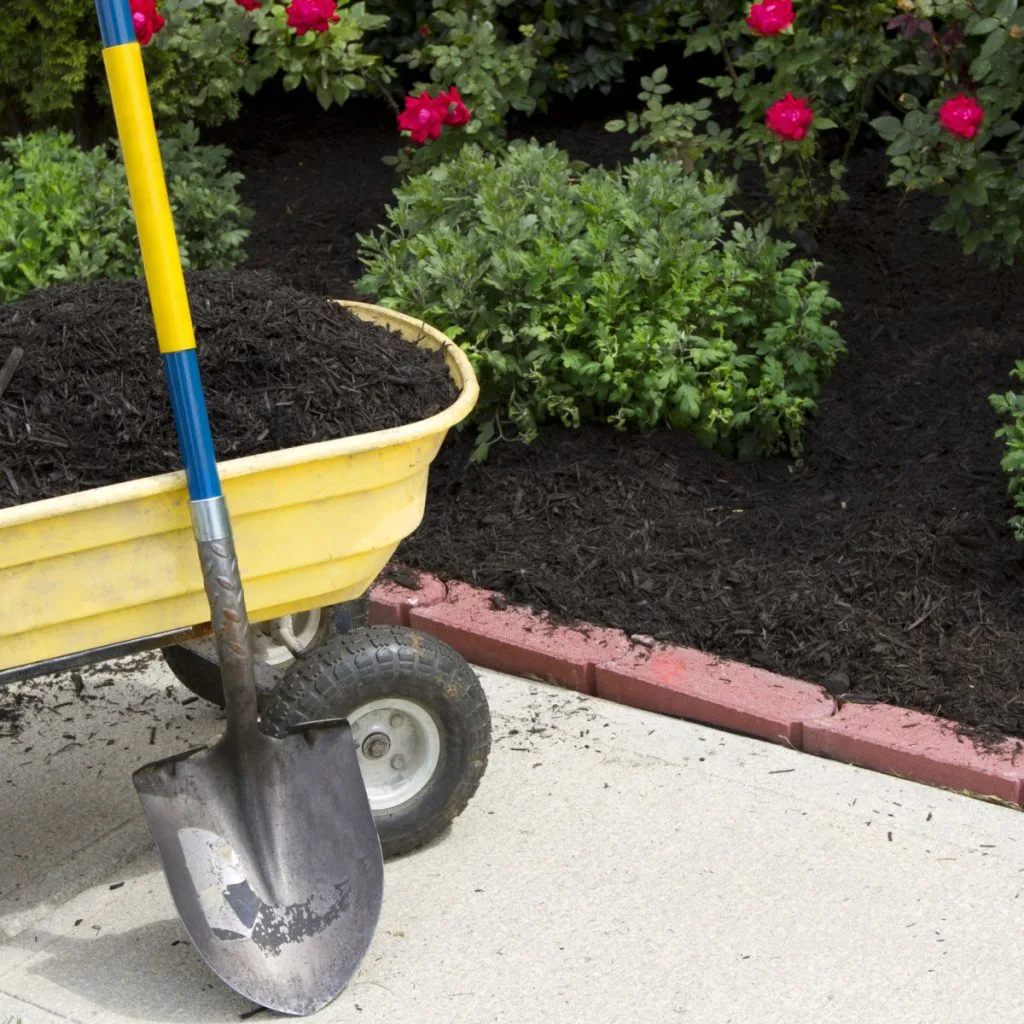
How To Eliminate Flowerbed Weeds With Cardboard
Getting Rid Of Weeds With Cardboard & Mulch
Mulching your flowerbeds is certainly the first line of defense against weeds. But in many cases, mulch alone simply isn’t enough to keep stubborn weeds from pushing through. Especially in flowerbed spaces that have been overrun with weeds in the past.
Unfortunately, in flowerbeds with those issues, even a thick layer of mulch, will not keep existing weeds from shooting through. See our article: The 3 Biggest Flowerbed Mulching Mistakes
For many years, landscape fabric has been the go-to choice for those looking to cut down on long-term weeding chores in their flowerbeds. But in most cases, it simply isn’t a good choice. Not for stopping weeds, for your plant’s health, or for your bank account either!
The drawbacks of using landscape fabric are extensive. For starters, it can be pricey. Especially if you purchase some of the thicker fabrics that are needed to stop stubborn weeds.
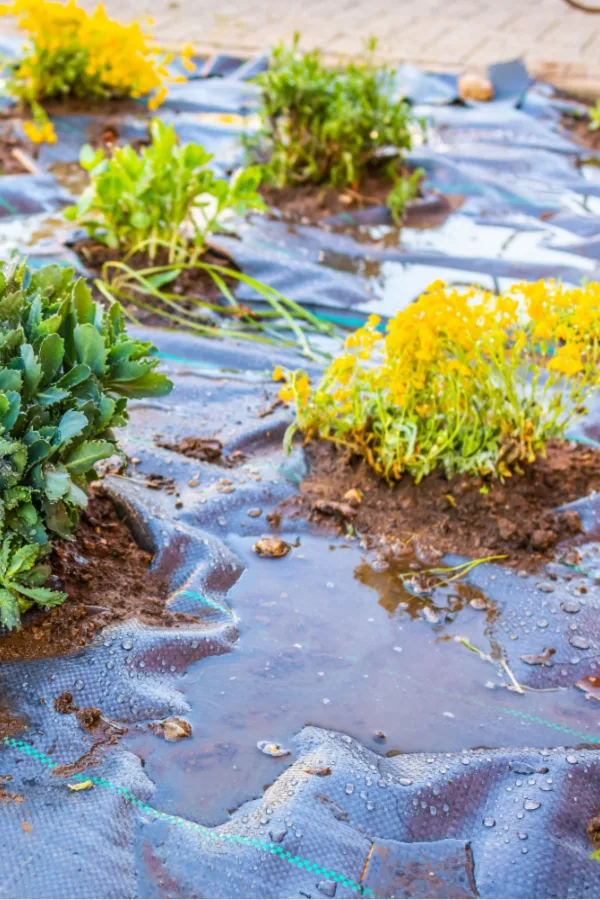
Why Landscape Fabric Is Not The Best Choice
But it’s not only the cost that makes landscape fabric a questionable choice. It can also quite easily affect the health of your plants. Over time, weed block fabrics do a poor job of allowing water and nutrients to pass through.
Even the best of fabrics will begin to clog as the mulch on top breaks down. When this happens, the plants receive less air and water into the soil. That in turn affects the root growth, leading to poor health that can even eventually prove fatal for some plants.
And with that loss of air and moisture underneath the soil, important vital insects and organisms can perish too. Most notably of which are earthworms – which happen to be one of the most beneficial of all organisms to work underneath the soil surface.

Making matters worse, when using fabric, its effectiveness as a weed block dwindles in just a year or two. Why? Because the mulch on top breaks down into a near soil like substance. Since it can’t break down into the soil below, it stays on top – letting new weed seeds germinate and grow.
Finally, once the fabric begins to break down and weeds form through it, it can make weeding incredibly difficult. And if you have to remove it to try to replace it – it can be nothing short of a nightmare!
The Answer To Eliminate Flowerbed Weeds – Cardboard!
The good news is that this is exactly where cardboard can come to the rescue in your flowerbeds. Unlike weed fabric, cardboard allows air and water to easily pass through at all times. Even better, it breaks down over time to actually help add to the soil’s value – not take away from it!
Cardboard also happens to attract earthworms and other beneficial worms. By placing it underneath the mulch in your flowerbeds to control unwanted weed growth, you actually increase soil life and activity and your flowerbeds nutrient value.
Adding to its list of benefits, in most cases, cardboard can be sourced quite easily for free with little effort. Whether it is using your own supply from deliveries, or sourcing leftover cardboard from local stores, it is readily and freely available.
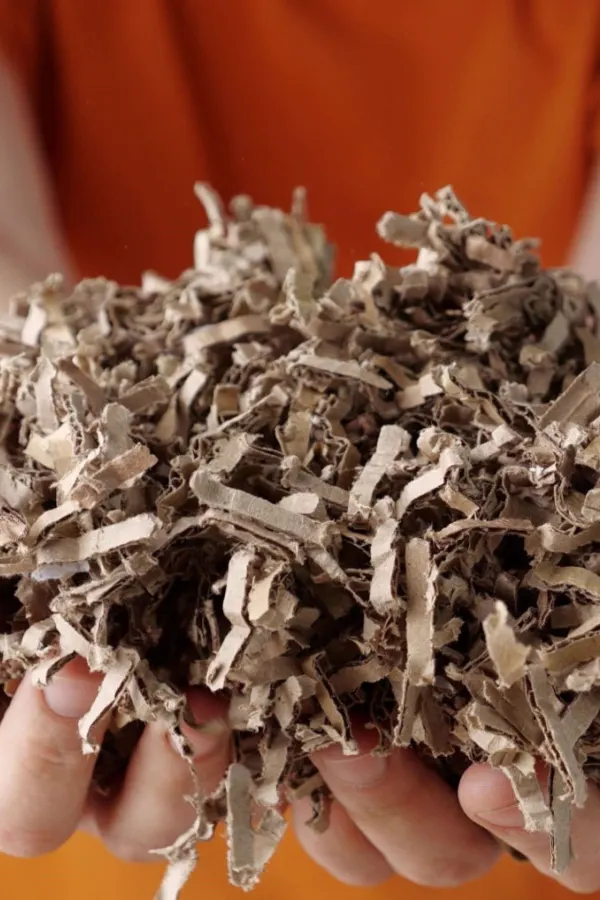
And the best part of all with using cardboard under the mulch in your flowerbeds? It works like a charm to stop weeds!
By simply installing a layer of cardboard on the soil and covering with mulch, you can prevent weeds from poking through for up to 6 months. An unlike rolling out and cutting around plants with fabric, you can place cardboard pieces easily and quickly wherever you need the protection.
How To Install Cardboard As A Weed Block
For cardboard to effectively stop weeds and break down efficiently, you always want to place it in direct contact with the soil. If there is any mulch or fabric existing, it first needs to be removed before laying down your cardboard pieces.
By simply installing a layer of cardboard on the soil and covering with mulch, you can eliminate flowerbed weeds for up to 6 months. And unlike rolling out and cutting around plants with fabric, you can place cardboard pieces easily and quickly wherever you need the protection.
Always use flat cardboard sections, as they will make laying mulch on top easier and much more attractive and uniform. To avoid any gaps where weeds can grow through, overlap each piece by four to six inches.
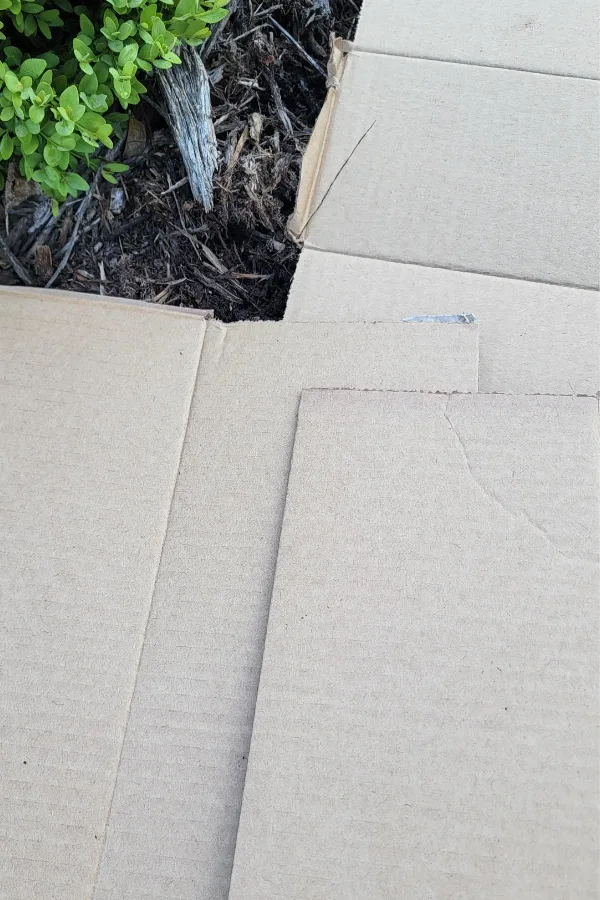
Always leave at least three to four inches bare around the base of any existing plants in your flowerbed. This allows plenty of air and moisture to the plant while the cardboard begins to break down.
Watering The Cardboard In
The next step, watering, is critical to keeping your cardboard in place to increase its effectiveness. Watering the cardboard in helps to add weight to the layer and keep it from shifting. If you lay down dry cardboard and do not water it and then mulch over it, it can very easily shift or even blow up and out with strong winds.
Water the cardboard until it is fully saturated. Next, layer on a thick coating of mulch. Mulching on top of the cardboard is a must. First and foremost, it holds the cardboard in place. In addition, it also is much more attractive than cardboard laying in your flowerbeds.
Most of all, adding mulch helps to make the entire bed nearly weed proof with two layers of weed fighting protection! Depending on the type of cardboard you use, it can take 3 to 6 months for the cardboard to fully decompose. That is usually enough time to provide weed protection for an entire growing season.
Using Cardboard Safely To Keep Your Flowerbeds Weed Free
Surprisingly, most cardboard types are safe to use in flowerbeds. Some of the best and most effective types you can use are corrugated, paperboard and mat board. The key is to only use cardboard that does not contain wax coatings or heavy amounts of ink.
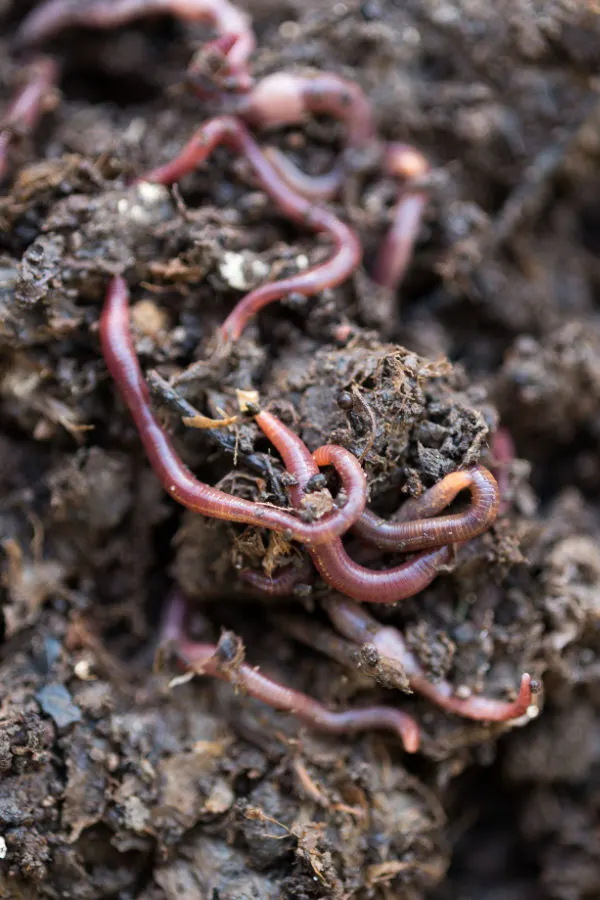
There are some cardboard types that you should always avoid. Never use triple-walled or thicker cardboard. It decomposes but takes too long and is difficult for nutrients and water to pass through to the roots. Also avoid any cardboard pieces that have an excessive coating of wax or that are heavily inked.
Unfortunately, wax coatings can make it difficult for nutrients and water to pass through. In addition, they also do not break down well and can cause issues for the soil and plants. Inks can have dangerous ingredients and without knowing the source, it’s best to not use cardboard that has color to it.
Here is to using cardboard in your flowerbeds this year to stop weeds!
This Is My Garden
Follow Our Facebook Page For Great Gardening Tips And Advice! This Is My Garden Facebook Page
This Is My Garden is a garden website created by gardeners, for gardeners. Jim and Mary Competti have been writing gardening, DIY and recipe articles and books and speaking for over 15 years from their 46 acre Ohio farm. They publish three articles every week, 52 weeks a year. Sign up today to follow via email, or follow along!
